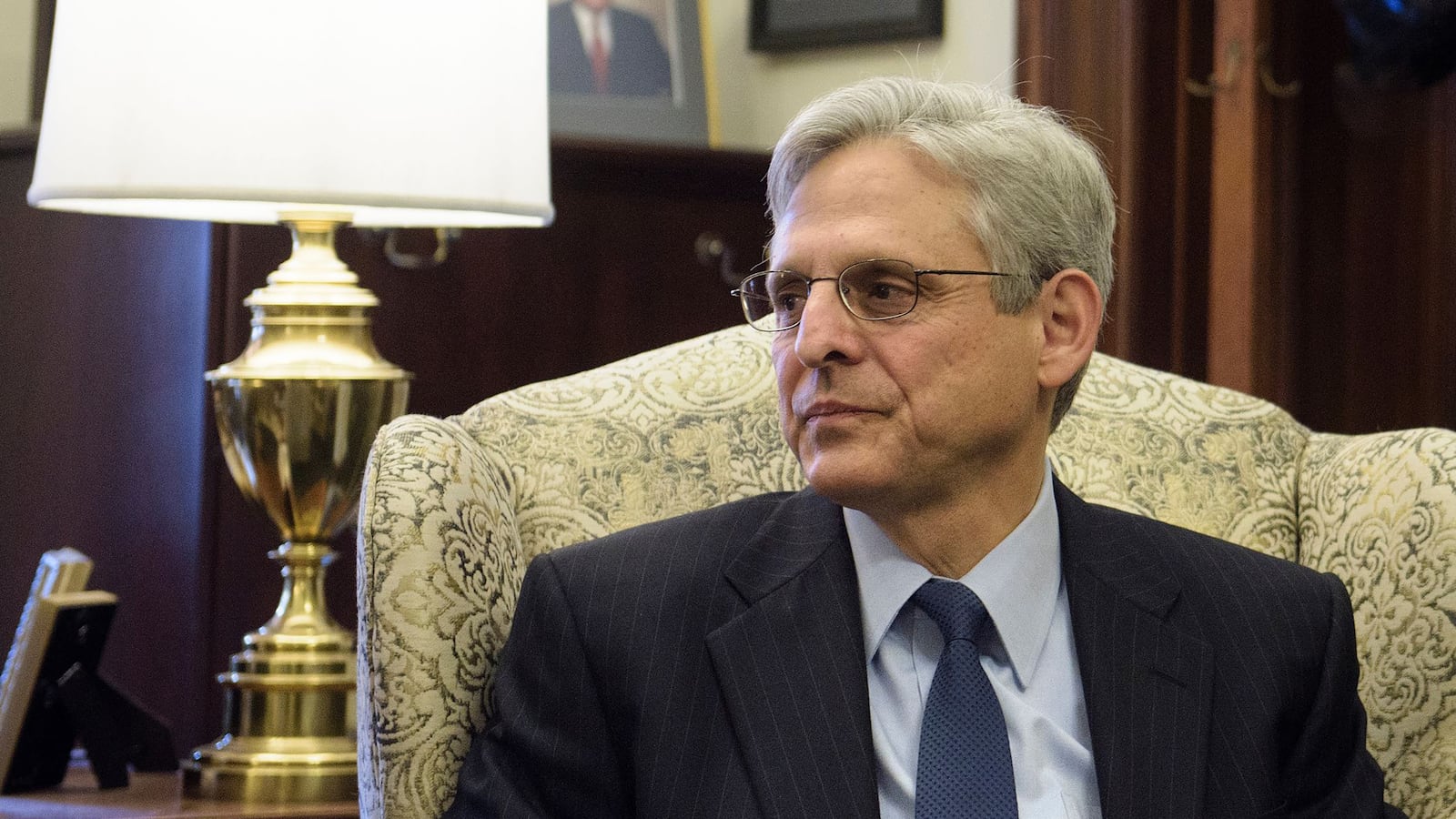It’s not just Merrick Garland—this Senate isn’t confirming anybody.
That’s the takeaway from a variety of new data that has emerged in the wake of the Garland stalemate, showing that his non-confirmation (and non-hearing) is the rule, rather than the exception, for the Republican-led Senate.
“It’s absolutely absurd,” Marge Baker, executive vice president of liberal group People for the American Way (PFAW), told The Daily Beast. PFAW has been tracking the issue closely and released new findings this week. “And it’s qualitatively different from anything that has gone before.”
For example, Mike DeBonis at The Washington Post compared the confirmation rates of the Democrat-led Senate in 2007-08, the last year of George W. Bush’s presidency, with those of the Republican-led Senate in 2015-16. The results are startling, and go far beyond Judge Garland.
Over the past 16 months, the Senate has confirmed 17 lifetime-appointment judges. In the same period in 2007-08, the Democrat-led Senate confirmed 45; in 1991-92, when Democrats controlled the Senate and George H.W. Bush was president, it confirmed 82. In other words, the GOP Senate is confirming just 38 percent as many judges as the Democratic 2008 Senate, and 21 percentof the Democratic 1992 one.
And it’s not just judges. The Congressional Research Service found that President Obama has had the fewest presidential nominees confirmed in decades: 198, compared with 345 for George W. Bush, and 268 for Bill Clinton.
For judicial confirmations, Baker lay the blame squarely on Sen. Charles Grassley, the chair of the Judiciary Committee who—in part because of the Garland fiasco—is now locked in a fierce re-election battle.
“Sen. [Patrick] Leahy [D-VT] worked hard in the last two years of Bush’s presidency to continue processing nominees,” she said. “Grassley is not. He is not just the judiciary chair for the Republican Party—he’s the judiciary chair for the whole country. It’s indefensible.”
PFAW’s own analysis, released this week, revealed that under Grassley’s leadership, the judicial confirmation rate has been 25 percent. Leahy’s was 58 percent. A recent PFAW press release dubbed Grassley the “Do-Nothing Chairman.”
While the public’s (wavering) attention is on the unprecedented refusal to consider Judge Garland’s nomination, Baker told The Daily Beast that the truly shocking inaction is on lower court nominations.
“I’ve been following this issue for 13 years,” she said. “District court vacancies were never in play—they were routine. But now, the obstructionism has gotten down to the district court level.”
A similar point was made in a New York Times op-ed by the recently retired Judge Shira Scheindlin, famous for ending New York’s controversial “Stop & Frisk” program. Scheindlin noted that since 2014, Republicans have confirmed only 15 of President Obama’s district court nominees, compared with 57 confirmed in 2007-08—again, when the Democrats controlled the Senate but a Republican was in the White House.
“The Senate majority’s policy of delaying qualified district-court nominations on purely political grounds undermines public trust in the impartiality and legitimacy of the judiciary,” Scheindlin wrote.
Baker noted that while the Supreme Court hears around 100 cases per year, district courts across the country hear 350,000—and 90 percent of the time, they have the final word.
“Not having these courts adequately staffed creates a real impediment for average Americans—business people, everybody —to get justice in the courts,” she said.
Indeed, the number of “Judicial Emergencies”—a formal designation by the federal court system for when the per-judge caseload is so high that it endangers access to justice—has nearly tripled in the last two years, from 12 in January 2014, to 32 in April 2016.
By way of comparison, there were 19 such judicial emergencies at this point in George W. Bush’s second term—and the number had gone down since the Democrats took control of the Senate.
Republican senators “are blocking nominations in such a cavalier fashion that it’s really distressing,” said Baker.
Yet Baker sees a silver lining in the Garland cloud. As I suggested in these pages last week, the Garland non-confirmation is shining an unusual light on the Supreme Court confirmation process—usually a non-issue in elections, but, perhaps, less so this year.
Baker went even further.
“This issue is a tangible part of presidential and Senate campaigns in a way that it hasn’t been before,” she said. Indeed, Baker hoped that the high-profile obstruction of Judge Garland’s nomination could call attention to the obstruction of nominees throughout the judicial system.
If people are paying attention, that is. Already, as Dahlia Lithwick complained in Slate, it’s hard to maintain attention on the Garland nomination, let alone more obscure ones down the line. Especially with two high-profile and highly polarizing presidential candidates this year, there’s reason to doubt anyone is paying attention to district court nomination battles.
Still, Baker remained optimistic. At the end of the day, she said, “the polling is miserable for [Republicans]. The American public does not support this.”





